OSHA Issues Revised COVID-19 Guidance on Protecting Workers

OSHA Issues Revised COVID-19 Guidance on Protecting Workers
By Andrew L. Levy & Steve Matzura on June 22, 2021
POSTED IN WORKPLACE COMPLIANCE, WORKPLACE TRENDS
McNees attorney Errin McCaulley is a co-author of this post
On June 10, 2021, OSHA released a revised version of its Protecting Workers: Guidance on Mitigating and Preventing the Spread of COVID-19 in the Workplace (“Workplace Guidance”). This Guidance was issued simultaneously with the Emergency Temporary Standard, which is applicable only in the healthcare industry. OSHA’s Emergency Temporary Standard is discussed in our separate blog post found here. Employers in all other industries should consider the recommendations set forth in the Workplace Guidance.
OSHA has emphasized the importance of employee vaccination and has now made clear that “[F]ully vaccinated people can resume activities without wearing masks or physically distancing.” Accordingly, OSHA’s revised Workplace Guidance focuses primarily on measures to protect unvaccinated employees and those employees who are vaccinated, but have a medical condition, such as a prior transplant or prolonged use of corticosteroids or other immune-weakening medications, which could affect the employee’s immune response to the vaccine.
The Workplace Guidance recommends that Employers should still take the following steps to protect unvaccinated or otherwise at-risk workers in their workplaces:
- Grant paid time off for employees to get vaccinated.
- Instruct any workers who are infected, unvaccinated workers who have had close contact with someone who tested positive for SARS-CoV-2, and all workers with COVID-19 symptoms to stay home from work.
- Continue physical distancing for unvaccinated and otherwise at-risk workers.
- Provide unvaccinated and otherwise at-risk workers with face coverings or surgical masks for use in the workplace. OSHA recommends that unvaccinated and otherwise at-risk workers should continue to wear face coverings indoors, especially when social distancing is not possible. OSHA also recommends that businesses continue to suggest that unvaccinated customers and guests continue to wear face coverings by posting signs recommending that they do so, even if no longer required under applicable state and local requirements.
- Educate and train workers on your COVID-19 policies and procedures.
- Maintain Ventilation Systems. In this regard the Workplace Guidance suggests the following measures to ensure that HVAC systems allow for proper ventilation and filtration:
-
- Confirm that the HVAC system is operating in accordance with the manufacturer’s instructions and design specifications.
- Conduct all regularly scheduled inspections and maintenance.
- Maximize the amount of outside air supplied, installing air filters with a Minimum Efficiency Reporting Value of 13 or higher where feasible.
- Maximize natural ventilation in buildings without HVAC systems by opening windows or doors, when appropriate.
- Consider the use of portable air cleaners with High Efficiency Particulate Air (HEPA) filters in spaces with high occupancy or limited ventilation.
- If someone who has been in the facility within 24 hours is suspected of having or confirmed to have COVID-19, follow the CDC cleaning and disinfection recommendations.
- Follow the OSHA Recordkeeping requirements and record workplace COVID-19 cases, if they are deemed to be work-related. Notably, OSHA states that it will not enforce its Recording Standard with regard to side effects from COVID-19 vaccines through May 2022 and employers need to record illness related to vaccine side effects on the OSHA 300 log. In certain limited circumstances, employers may also need to report fatalities or hospitalizations due to work-related COVID-19 cases. We recommend you consult with counsel with any questions concerning the OSHA fatality and hospitalization reporting requirements.
- Implement protections from retaliation and set up an anonymous process for workers to voice concerns about COVID-19-related hazards.
With state mitigation measures expired or soon to be lifted, OSHA’s Workplace Guidance provides important recommendations for employers’ COVID-19 response measures in this next (hopefully, final) stage of the pandemic. Although OSHA has emphasized that the Workplace Guidance is advisory, significant failures to comply with the recommendations could undermine employee confidence in your workplace safety measures and/or result in a citation under the General Duty Clause.
McNees is here to help with COVID-19 workplace issues, and any other workplace health and safety compliance concerns.




